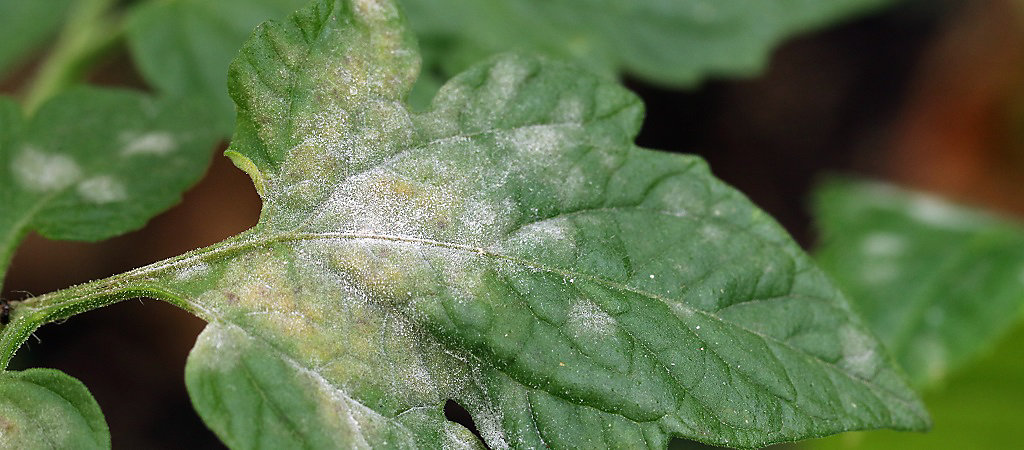Controlling Powdery Mildew in Fruiting and Leafy Vegetables

Seeing white powdery patches on fruiting and leafy vegetable crops? Powdery mildew might be the culprit, and if so, can result in reduced yields and lower crop quality. Corteva Agriscience™ has the solutions growers need to prevent and control powdery mildew, including Fontelis™ fungicide.
Powdery mildew is a fungal disease that can infect fruiting and leafy vegetables in all plant parts above the ground, including green shoots, leaves, flowers and fruit1. When crops are infected, the disease can appear as white or grey dusty patches on leaf surfaces2 – hence the name “powdery” mildew.
The disease infection begins in late summer when the foliage is already weakened and humidity is higher around leaves with a dense canopy3.Powdery mildew is favoured by warm, humid weather and does not require free moisture nor rainfall4 to spread. All that is needed for disease development is shade, high humidity and temperatures of 15-20 degrees Celsius5.
In addition to leaving crops with powdery patches on surfaces, powdery mildew reduces photosynthesis which results in reduced yield and lower-quality crops6, impacting the marketability and profitability of the crop.
As always, it is critical to have an integrated pest management (IPM) program in place to maximize yield across every acre. Consider including a fungicide to prevent and control powdery mildew in fruiting and leafy vegetables such as a group 7 fungicide like Fontelis.
With powerful and flexible disease management, Fontelis provides residual, preventative and post-infection activity on a broad-spectrum of key diseases – including powdery mildew. It contains the active ingredient penthiopyrad, a carboxamide fungicide that inhibits succinate dehydrogenase, thereby blocking fungal respiration. Fontelis controls plant diseases caused by many Ascomycete and Basidiomycete fungi by blocking both spore germination and mycelial growth.
Fontelis provides translaminar and local systemic movement within the plant. Its mode of action allows for flexible application timing, but for best control of powdery mildew, follow these application best practices:
Our dedicated horticulture experts are here to provide you with technical recommendations and support to help you make the best agronomic decisions for your operation. Ask them about Fontelis fungicide to control powdery mildew in fruiting and leafy vegetables.
1http://www.omafra.gov.on.ca/english/crops/facts/powderymil.htm#symp
2https://agriculture.canada.ca/en/agriculture-and-environment/agricultural-pest-management/diseases-and-pests/powdery-mildew
3http://www.omafra.gov.on.ca/english/crops/organic/news/2014/2014-09a3.htm
4http://www.omafra.gov.on.ca/IPM/english/raspberries/diseases/powdery-mildew.html
5https://hortnews.extension.iastate.edu/powdery-mildew
6https://extension.usu.edu/pests/research/powdery-mildew-vegetables